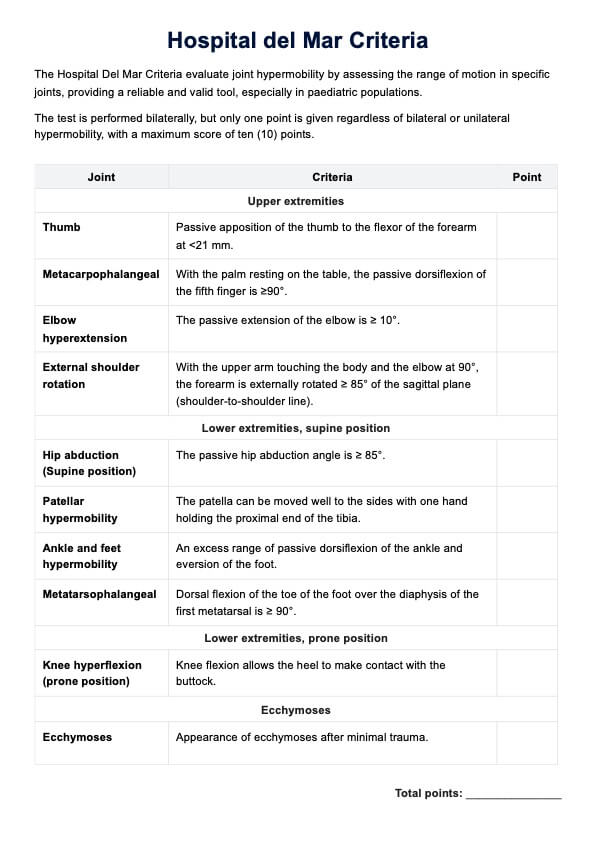Each joint exhibiting hypermobility receives one point, with a maximum score of 10 points.

Hospital del Mar Criteria
An article guide to Hospital del Mar's criteria, ensuring clarity and understanding for users in assessing hypermobility.
Hospital del Mar Criteria Template
Commonly asked questions
Pediatricians, rheumatologists, and physical therapists assessing joint hypermobility.
The Hospital del Mar Criteria is a standardized method for evaluating joint hypermobility. It assesses the range of motion in specific joints, including the little finger, thumb, elbow, shoulder, hip, knee, patella, ankle, and metatarsophalangeal joint. One point is given for hypermobility in each joint, with a maximum total score of 10 points. A higher total score indicates greater overall joint laxity.
EHR and practice management software
Get started for free
*No credit card required
Free
$0/usd
Unlimited clients
Telehealth
1GB of storage
Client portal text
Automated billing and online payments











